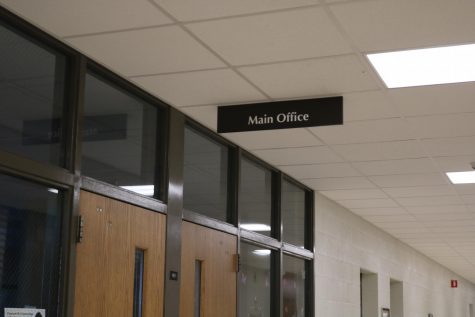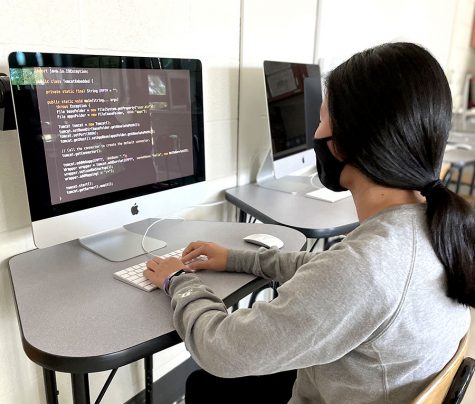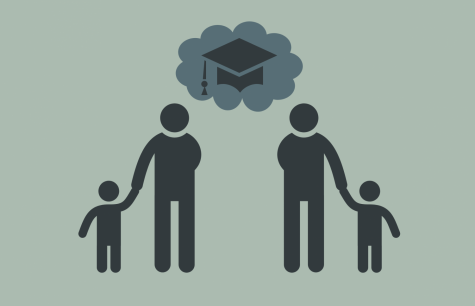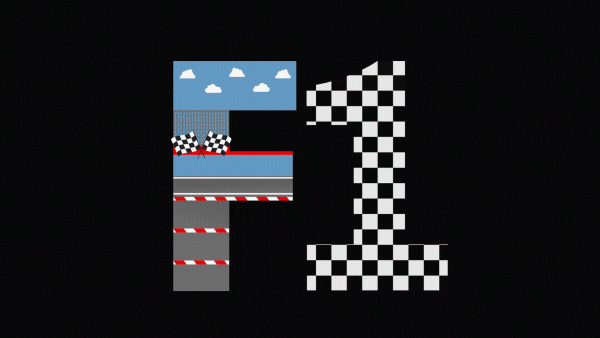Plugged in
With the majority of schoolwork taking place online and students increasingly turning to screens to fill their free time, it is important to understand the psychological effects of technology usage.
Screens vs. Our Attention Span
Many high school students have faced the struggle of completing homework with their phone in reach. They may find themselves incredibly bored or fidgeting in their seat while fighting to stay focused, asking themselves what is wrong with them. The answer to that is nothing—most West High students have experienced the distraction that comes with technology at some point or another. In a poll of 103 students, 34% said they are often distracted by technology while doing school work, and another 43.7% said they are occasionally distracted. A study conducted by the University of Virginia found that people tend to display symptoms of inattentiveness and hyperactivity when near their phones.
These symptoms occur because cell phones are engineered to be addictive. Nowadays, many apps are free, with profits mainly coming from the sale of ad space on the platform. Therefore, the goal of most developers is to get people to spend as much time as possible on their app, and they have found that the best way to hold consumers’ attention is to maximize the release of dopamine, a hormone that causes pleasure.
The TikTok algorithm, for example, has a similar effect on the brain as gambling. Instead of spending money, the user spends their time, and the gamble is what the next video will be like. Unlike traditional video platforms like YouTube, TikTok users do not know what video will come next and whether they will like it. They could enjoy it more or less than the previous one, but if they keep scrolling through videos, they will eventually find something they really like. Encountering that enjoyable video releases a lot of dopamine, encouraging the user to keep scrolling for hours.
These apps are engineered to teach the brain that a phone is a reliable place to turn to for the release of dopamine, which it craves. Many find themselves unmotivated when doing tasks that do not cause the release of dopamine, like homework, and they start to crave their phone because their brain knows it will cause another surge of the hormone. The prospect of this dopamine release is what causes the inattentive and hyperactive symptoms.
Dopamine is not the only hormone whose release is affected by phones. Phone notifications can release cortisol, a stress hormone, which demands attention to whatever the brain deems a threat. The release of cortisol is what makes phone notifications so hard for people to ignore, causing phones to be quite disruptive when trying to get work done.
The best way for people to prevent phone-related distractions is to distance themselves from their phones by putting it out of reach or, even better, in another room entirely. To distance themselves mentally, they may turn their phone to Silent or Do Not Disturb when trying to focus.
Screens vs. Memory
One of the sneakier side effects of technology is how it hinders the ability to remember information long term. There are two reasons for this. First, the information presented on the internet often comes with too high a cognitive load to be stored properly. Second, our brains are much less likely to put effort into remembering something that could be accessible later.
The amount of information someone tries to store in their working memory is their cognitive load. If they try to store too much information in their working memory, the brain becomes overloaded and cannot transfer that information to their long-term memory.
Consuming information on the internet requires a much higher percentage of the cognitive load than getting the same information offline because websites are often oversaturated with hyperlinks, videos, pictures and advertisements, all of which increase the cognitive load.
This is especially relevant to West High students who have an average of two hours of online schoolwork each night. After the year of mixed online, hybrid and in-person schooling, more assignments and resources have shifted to be online, making it harder for students to learn.
Information already stored in long-term memory is also at risk because of the internet. While long-term memory doesn’t have a limit, it is possible for someone to lose information if they don’t work to recall it regularly. Putting in the work to remember recently learned information signals the brain that it shouldn’t get rid of it, but what many students do instead is turn to Google. By not exercising the neural pathways needed to recall the information, students tell their brain that it doesn’t need to put in the effort to keep the knowledge stored in long-term memory.
Just knowing that the information can be found elsewhere can make someone less likely to remember it. In a 2014 psychological study conducted by Linda Henkel, she discovered that people were less able to remember objects that they had photographed. The participants observed 30 objects in a museum, but were only instructed to take a photo of half of the objects. When questioned, participants were better able to recall the objects that they had not taken a photo of.
Screens vs. Sleep
Technology’s effect on sleeping habits is one of the most widely known and observed psychological effects of screen time. In a poll of West High students, 25% of respondents said an increase in technology usage has negatively impacted their sleep schedules.
The level of energy someone has throughout the day is determined by their circadian rhythm, or “biological clock”, which regulates body temperature and eating habits. It also regulates sleep cycles through the release of the hormone melatonin.
The amount and type of light in your environment determine your circadian rhythm. For most of human history, light levels coincided with the time of day, but now people are exposed to artificial light emitted by screens at all times of the day, throwing off their sleep schedules from the day-night cycle. To maintain a healthy sleep schedule, people should limit the amount of light in their environments three hours before they go to bed.
Blue light especially should be avoided. Different types of light have varying levels of impact on the circadian rhythm, with blue light affecting it the most. A Harvard study comparing green light to blue light found blue light suppresses melatonin production twice as long, setting back the circadian rhythm twice as much.
While being exposed to light at night is unavoidable for most high school students, there are some things students can do to decrease its effect on their sleep schedule. The first is to reduce the amount of blue light emitted by screens after the sun sets. Many students at West High have already taken steps to combat blue light, with 14.6% owning blue light blocking glasses and 37.9% using blue light blocking apps.
These apps are easy to employ, with many devices having built-in functions to block blue light, such as night mode for Android users and night shift for Apple users. There are also a variety of free apps that can be installed on Chromebooks and PCs for this purpose, such as Twilight, F.lux and Bluelight Filter. Students can also mitigate technology’s effect on their sleep schedules by exposing themselves to plenty of bright light during the day.
People should also be aware of what they do in the 30 minutes before they go to sleep. Ideally, people should use this half-hour to wind down, but most apps are designed to keep your brain engaged so you will stay on them for longer. To get the best sleep possible, people should avoid doing things like going through their notifications, visiting social media platforms and doing homework right before bed. More passive activities like watching YouTube or Netflix are okay, but for many people, it can be tempting to continue watching past the time they wanted to go to bed. The ideal pre-sleep routine doesn’t involve technology at all, so students should make an effort to limit their usage.
Your donation will support the student journalists of West High School. Your contribution will allow us to purchase Scholarship Yearbooks, newsroom equipment and cover our annual website hosting costs.

(she/they) Rosemary is a senior at West High. While this is her third year on staff, it is her first year as the print opinion editor. When she is not...

















